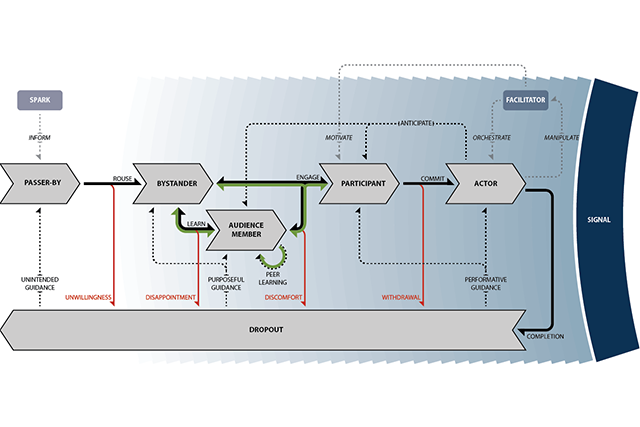Biometric Mirror: Probing the Ethics of AI and Facial Analysis
Niels Wouters, Ph.D. About
innovating at the intersection of technology, design and human experience

I'm a Design Researcher based in Melbourne, Australia. I apply architectural design principles and approaches to enable ethical innovation. Primary areas of focus are artificial intelligence, facial recognition, and biometrics. My work reaches global audiences and highlights the importance of public participation in the quest to ensure that innovation creates tangible benefits for society. My commentary is featured regularly in print media and on television, where I discuss societal risks and opportunities of technology trends.
List of publications
Stories of Exile: Hyperlocal Media Architecture in Contested Spaces
Synchronized Wayfinding on Consecutively Situated Public Displays
Honeypot Effect: Audience Engagement in Interactive Installations

In HCI, the honeypot effect describes how people interacting with a system passively stimulate passers-by to observe, approach and engage in an interaction. Previous research has revealed the successive engagement phases and zones of the honeypot effect. However, there is little insight into: 1) how people are stimulated to transition between phases; 2) what aspects drive the honeypot effect apart from watching others; and 3) what constraints affect its self- reinforcing performance. In this paper, we discuss the honeypot effect as a spatiotemporal model of trajectories and influences. We introduce the Honeypot Model based on the analysis of observations and interaction logs from Encounters, a public installation that interactively translated bodily movements into a dynamic visual and sonic output. In providing a model that describes trajectories and influences of audience engagement in public interactive systems, our paper seeks to inform researchers and designers to consider contextual, spatial and social factors that influence audience engagement.
Social Influence of Full-Body Interaction with Public Displays
Selected Interviews and Press
„TikTok: Data Mining on the World's Most Popular App”, in ABC Four Corners
„The TikTok Spiral”, in ABC News
„Glowing Entrance Revealed for Melbourne's Newest Museum”, in Sydney Morning Herald
„All Hail the Algorithm”, in Al Jazeera
„Reflecting the Imperfections of AI”, in BBC News
„Perfect Humans: Good or Bad”, in The Age
„Should We Believe this Algorithm?”, in Sydney Morning Herald
„This AI Judges You Based on Our Biases”, in World Economic Forum
„Facial Scanning Abuse Looms”, in The Washington Times
„AI Deciphers your Personality”, in ABC, Triple J
„Media Architecture Changes the City”, in ABC Newcastle, Australia
„Make Friends While Printing”, in De Standaard, Belgium
„What if Houses Could Talk?”, in Campuskrant KU Leuven, Belgium
„Our Neighbors have Something to Tell”, in Radio 1, Belgium
„If Houses Could Talk...”, in De Standaard Avond, Belgium




